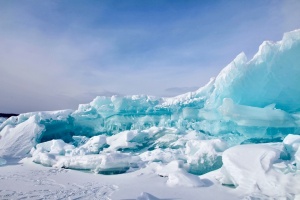
Photo by Sophia Simoes on Unsplash
History is written in many different ways. It’s written down in books. It’s written in graveyards. It’s written in tree rings. And it’s written in the ice.
Tree rings gave a mystery to scientists, showing poor summer grown for about a decade in mid-500s. Written records indicates nearly 18 months with the sun hidden behind clouds in some areas, killing two years of harvest. Searching the ice shows volcanic eruptions about that time.
Using new technology of ultraprecise analysis of ice from a Swiss glacier, a team of scientists narrowed it down to a volcano in Iceland erupting in early 536, with followup eruptions in 540 and 547. Scientist understand the link between volcano eruptions causing dust and debris in the atmosphere dropping temperatures because the sun is blocked, resulting in harvest failures and famine. With the one-two-three hit of eruptions, the starvation marked humanity with malnutrition, leaving it open for a plague. The Justinian Plague ravaged the Roman Empire, killing one-third to one-half of the eastern population, likely contributing to the Empires eventual fall.
Volcanos -> light/cold -> harvest & food failure -> plague -> population loss -> war and political upheaval.
Everything is connected. Tread lightly. Mother Earth writes history in ice and it’s been a while since she replenished her scribal parchment.
Bibliography
Gibbons, Ann. “Why 536 was ‘the worst year to be alive'”. science.org. 2018 Nov 15. https://www.science.org/content/article/why-536-was-worst-year-be-alive (last viewed 3/31/2022)